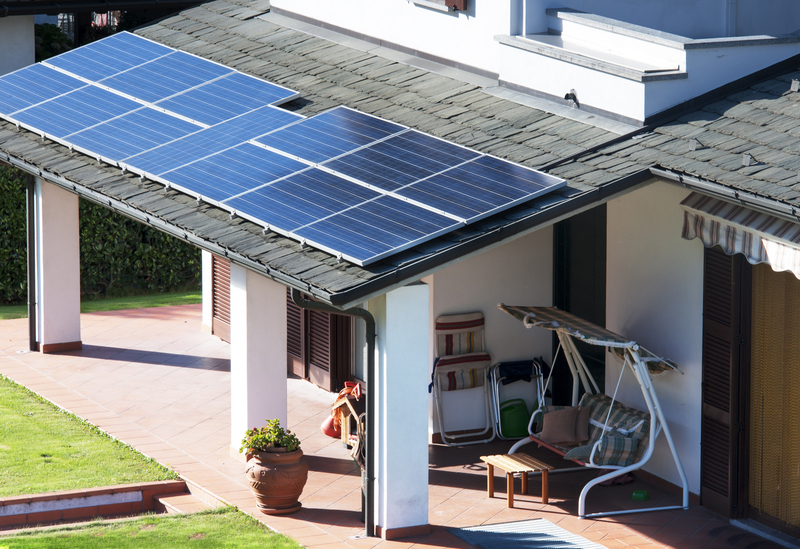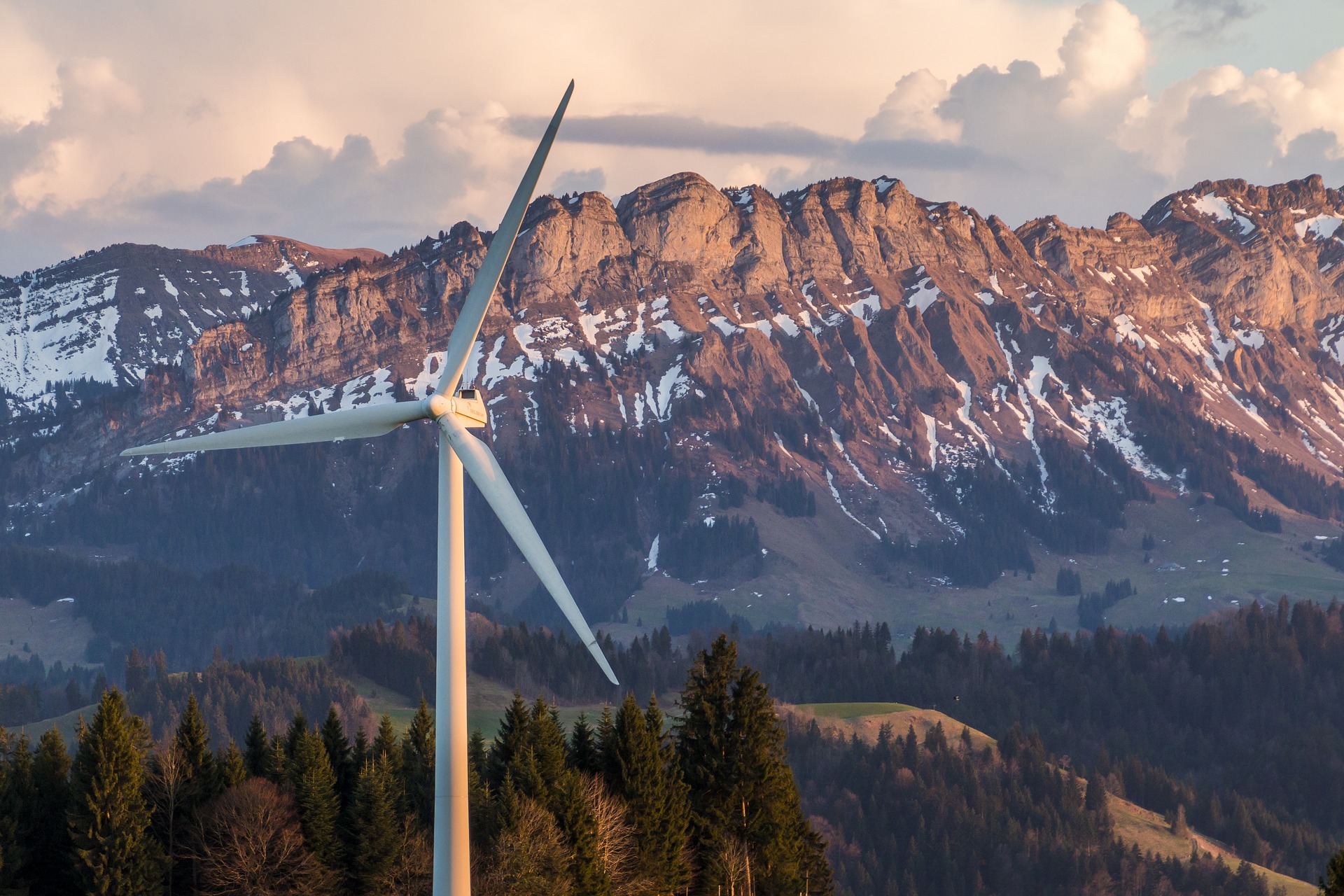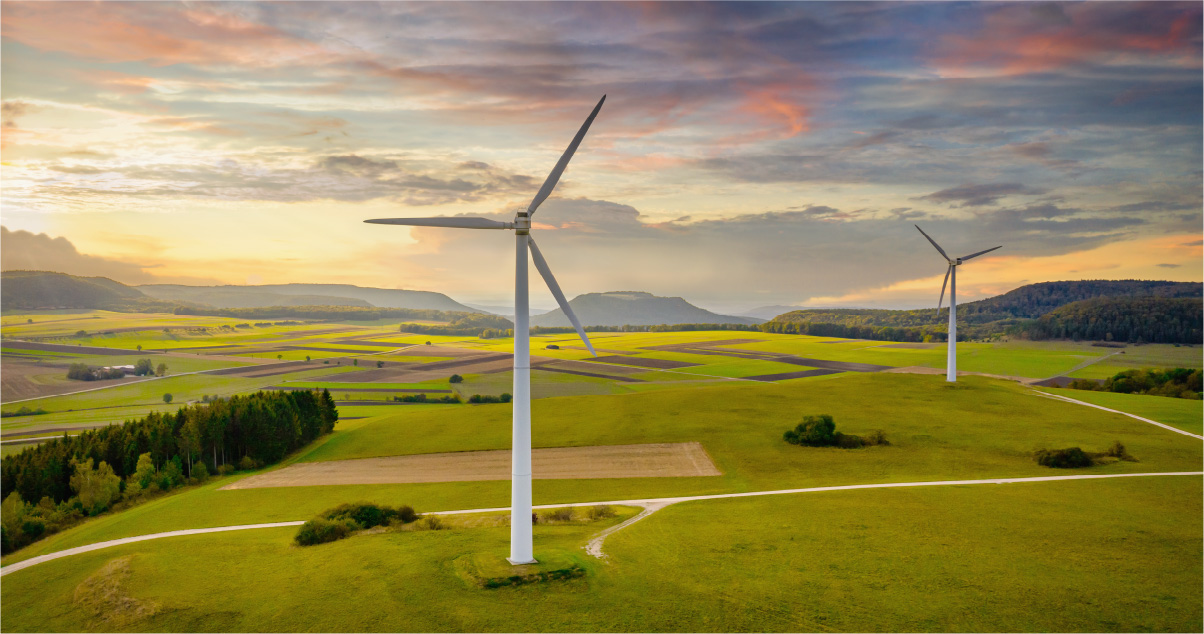This article is your complete guide into the world of green energy. This sustainable and cost-effective solution is generated from natural resources such as water, sunlight, and wind. As electricity costs rise, consumers are increasingly turning to eco-friendly alternatives like green electricity. Green energy types like solar panels and wind turbines not only save money but also reduce an environmental footprint.
Here at The Energy Professor, we want to give you the information you need to not only save money on your energy bill but to also become more energy efficient. We hope find this post helpful! And makes it easier for you to know more about green energy. Be sure to also check out our one-of-a-kind energy savings calculator!
The Energy Professor Electricity Rate Check Tool
What is Green Energy?

Green energy is derived from renewable resources. It’s more popularly known for its minimal environmental impact. This term emphasizes sustainability, as sources of green electricity, like solar, wind, geothermal, hydro, and biomass energy, emit little to no greenhouse gases. While many renewable energy forms are labeled ‘green,’ it’s important to note that ‘green’ and ‘renewable’ are similar but not identical concepts. Green energy specifically prioritizes environmental impact, setting it apart in the broader renewable energy spectrum.
What is the Difference Between Green Energy and Renewable Energy?
- Green energy is renewable energy with the least environmental impact.
- Renewable energy is while renewable energy includes all energy from natural, replenishable sources. Not all renewable energy is as eco-friendly as green energy.
Green energy and renewable energy differ primarily in their environmental impact. Renewable energy comes from naturally replenishing resources like the sun, wind, water, and geothermal heat, known for their endless supply that doesn’t deplete Earth’s resources. Green energy, a subset of renewable energy, specifically targets sources that produce little to no environmental impact, especially regarding greenhouse gas emissions. This distinction is vital in the shift towards sustainable energy practices.
Related Post: What are Wind Energy Pros and Cons?
What are the Different Types of Green Energy?

Green energy is characterized by its zero or minimal environmental impact, particularly in terms of pollution and greenhouse gas emissions. Unlike some renewable energy sources that might emit greenhouse gases or involve harmful activities like drilling or mining, green energy strictly avoids such impacts. The primary green energy sources include solar, wind, hydro, geothermal, biomass, and biofuel energy. These are distinguished by their sustainable methods and low impact on natural habitats, ensuring environmental preservation. Therefore, while all green energy is renewable, not all renewable sources meet the stringent criteria to be considered green due to their potential environmental effects.
What are Different Types of Green Energy?
- Solar Energy
- Wind Energy
- Hydroelectricity and Tidal Energy
- Geothermal Energy
- Biomass Energy
Solar Energy
Solar energy, generated from the sun’s light using photovoltaic devices or solar cells, is a clean, renewable source that’s increasingly popular. If you’re considering solar energy, it’s important to weigh its benefits, such as sustainability, against factors like installation costs and location suitability for optimal efficiency.
Wind Energy
Wind energy is generated by capturing the wind’s power using turbines. These turbines convert the kinetic energy of wind into electricity with minimal environmental impact, as wind is a natural and freely flowing resource. Like all energy sources, wind power has its pros and cons, which are detailed in our complete guide for those considering its use.
Hydro Electricity
Hydropower generates electricity by harnessing the movement of flowing or falling water. Most hydroelectric plants have a reservoir to manage water flow. Releasing water from the dam allows it to flow onto a turbine, spinning it to create power. This method of green energy leverages water’s natural motion for energy production.
Geothermal Energy
Geothermal energy taps into the Earth’s crust’s natural heat to generate electricity. This thermal energy, a result of the Earth’s formation, is harnessed using water from underground hot springs. For a deeper understanding, refer to our dedicated article on geothermal energy.
Biomass Energy
Biomass energy is derived from converting organic matter, such as plant or animal waste, into electricity or heat. It leads to the production of biofuels, which power vehicles or generate electricity. The two primary biofuels are ethanol and biodiesel. Ethanol, an alcohol, is made by fermenting sugars and starches from crops like corn, sugarcane, and wheat. Biodiesel, a renewable fuel, is produced from vegetable oils, animal fats, or recycled cooking grease.
Related Post: What are Wind Energy Pros and Cons?
What States Produce the Most Green Energy?

Texas is a powerhouse in renewable energy production in the United States, particularly excelling in wind and solar energy. The state contributed an impressive 30% of the nation’s wind energy in 2020, according to the American Wind Energy Association. In the realm of solar power, Texas generated over 4.4 million megawatt-hours in early 2022, solidifying its position at the forefront of solar energy production. While various states have made strides in green energy, Texas’s leadership in renewable energy production, especially in wind and solar, underscores its pivotal role in the U.S. renewable landscape.
What are the Top 5 States that Produce the Most Green Energy?
- Texas – Texas is the top producer of wind energy in the United States, generating more wind power than any other state. According to the American Wind Energy Association, Texas produced over 30% of the country’s wind energy in 2020.
- Washington –In 2022, Washington produced one-tenth of the total renewable-sourced utility-scale electricity nationwide. Washington leads the nation in electricity generation from hydroelectric power and accounted for about 31% of the nation’s total hydroelectric generation in 2022.
- California – California is a leader in solar energy production, with the largest installed solar capacity of any state in the country. The state also has several large-scale solar power plants and is home to numerous solar panel manufacturers.
- Vermont – Vermont has the highest percentage of its electricity generated from renewable sources, with over 99% of the state’s electricity coming from renewable sources such as hydropower, wind, and solar.
- Oregon – In 2022, renewable energy resources, led by hydroelectric power, accounted for about 70% of Oregon’s total in-state electricity net generation.
Related Post: Complete Guide on Solar Leasing
Green Energy FAQ

Q: What are the economic benefits of using green energy?
A: Green energy can lead to cost savings over time, reducing reliance on energy sources. It also stimulates job creation in the renewable energy sector.
Q: How does the efficiency of solar panels compare to traditional energy sources?
A: Solar panels are increasingly efficient and can often generate more sustainable energy per square foot than traditional sources, depending on geographical location and technology.
Q: Can wind energy be stored for use when there is no wind?
A: Yes, wind energy can be stored in batteries or through other storage technologies for use when wind levels are low.
Q: What is the environmental impact of constructing renewable energy facilities like wind farms?
A: While there is some environmental impact from constructing these facilities, it is generally lower than the long-term impacts of fossil fuel energy sources.
Do you Need Cheaper Electricity?
If you’ve taken the time to understand the information on your bill and discovered you’re paying more than you’d like for your electricity, have you looked around for a cheaper deal? The Energy Professor has a wealth of information on ways to save on your utilities, including details of top deals that could significantly reduce your monthly or quarterly electricity bills.
We hope you found this article helpful! If you are looking for ways to increase energy efficiency and sustainability in your home be sure to take a look at all of the latest renewable energy options in your area. The Energy Professor helps residential and small business owners find qualified energy suppliers in New York, New Jersey, Pennsylvania, Texas, Ohio, Maryland, Illinois, and Massachusetts


